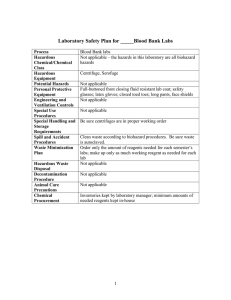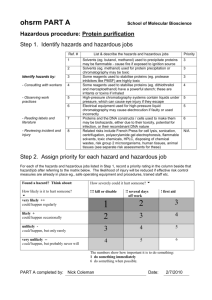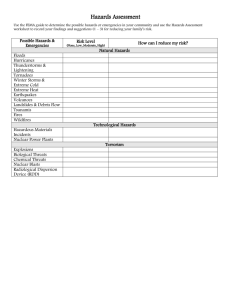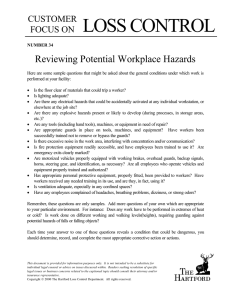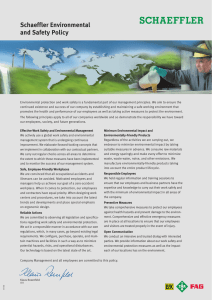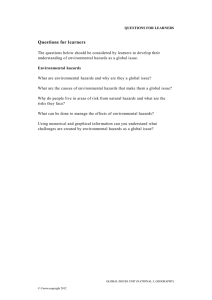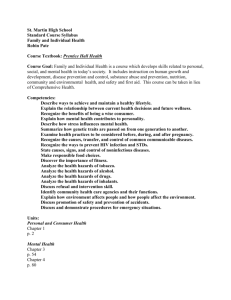Identify Potential Hazards in the Neighborhood and Community
advertisement
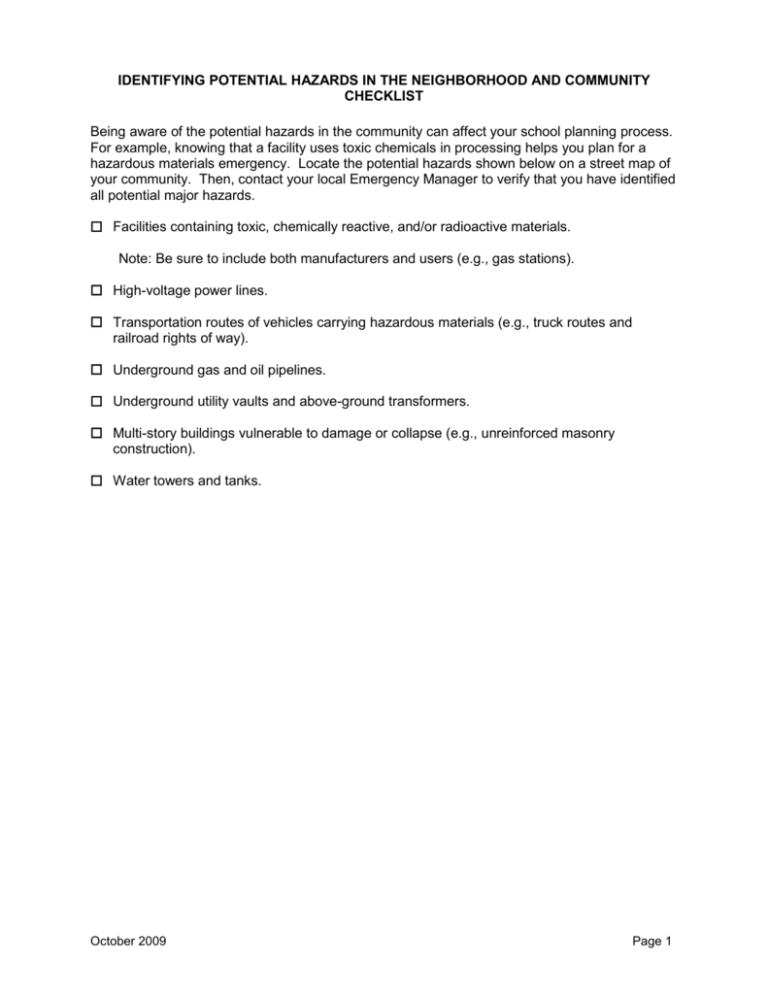
IDENTIFYING POTENTIAL HAZARDS IN THE NEIGHBORHOOD AND COMMUNITY CHECKLIST Being aware of the potential hazards in the community can affect your school planning process. For example, knowing that a facility uses toxic chemicals in processing helps you plan for a hazardous materials emergency. Locate the potential hazards shown below on a street map of your community. Then, contact your local Emergency Manager to verify that you have identified all potential major hazards. Facilities containing toxic, chemically reactive, and/or radioactive materials. Note: Be sure to include both manufacturers and users (e.g., gas stations). High-voltage power lines. Transportation routes of vehicles carrying hazardous materials (e.g., truck routes and railroad rights of way). Underground gas and oil pipelines. Underground utility vaults and above-ground transformers. Multi-story buildings vulnerable to damage or collapse (e.g., unreinforced masonry construction). Water towers and tanks. October 2009 Page 1


